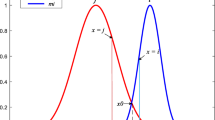Abstract
Ground penetrating radar (GPR) is a non-destructive method (NDT) for subsurface object identification. Interpretation of GPR data is often done manually by an engineer, which is a time-intensive task and requires moderate to significant level of training. The authors proposed a novel machine learning based processing for automatic interpretation and quantification of concrete bridge deck GPR B-scan images. The proposed method is based on combination of image processing, machine learning (ML) data classification, data filtering, and spatial pattern analysis for quantification of deterioration in concrete bridge decks. For the first time, the authors introduced a dataset of 4,000 B-scan images cropped from real bridge deck GPR field data, named DECKGPRH1.0. The proposed method is tested on bridge deck GPR data collected from three bridges with different NBI (National Bridge Inventory) ratings. The results presented indicate that by implementing a ML based classifier and a fine tuned filter, the proposed approach provides a robust solution for automatic quantification GPR field data.
Similar content being viewed by others
References
AASHTO LRFD (2012). AASHTO LRFD bridge design specifications: Customary US units, American Association of State Highway and Transportation Officials, Washington, D.C., USA.
Asadi, P. and Gindy, M. (2019). “DECKGPRHvl.0 dataset.” https://github.com/PouriaAI/GPR-Detection/ [Accessed on January 10, 2019].
ASTM D6087 (2008). Standard test method for evaluating asphalt-covered concrete bridge decks using ground penetrating radar, D6087, ASTM International, West Conshohocken, PA, USA.
Blum, A. (1992). Neural networks in C++: An object-oriented framework for building connectionist systems, John Wiley & Sons, New York, NY, USA.
Bouzerdoum, A., Tivive, F. H. C., and Abeynayake, C. (2016). “Target detection in GPR data using joint low-rank and sparsity constraints.” Compressive Sensing V: From Diverse Modalities to Big Data Analytics. International Society for Optics and Photonics, Vol. 9857, p. 98570A, DOI: https://doi.org/10.1117/12.2228345.
Cui, Y. A., Wang, L., and Xiao, J. P. (2010). “Automatic feature recognition for GPR image processing.” World Academy of Science, Engineering and Technology, Vol. 61, No. 1, pp. 176–179.
Dalal, N. and Triggs, B. (2005). “Histograms of oriented gradients for human detection.” Proc., Computer Vision and Pattern Recognition 2005, IEEE Computer Society, San Diego, CA, USA, Vol. 1, pp. 886–893, DOI: https://doi.org/10.1109/CVPR.2005.177.
Freund, Y. and Schapire, R. E. (1996). “Experiments with a new boosting algorithm.” Proc. 13th International Conference on Machine Learning, Bari, Italy, pp. 148–156, DOI: 10.1.1.51.6252.
Gucunski, N. and National Research Council (2013). Nondestructive testing to identify concrete bridge deck deterioration, Transportation Research Board, The National Academies Press, Washington, D.C., USA, DOI: https://doi.org/10.17226/22771.
Jaw, S. W. and Hashim, M. (2011). “Accuracy of data acquisition approaches with ground penetrating radar for subsurface utility mapping.” Proc., 2011 IEEE International RF & Microwave Conference, IEEE, Seremban, Malaysia, pp. 40–44, IDOI: https://doi.org/10.1109/RFM.2011.6168691.
Krizhevsky, A. and Hinton, G. (2009). “Learning multiple layers of features from tiny images.” Technical report, University of Toronto, Vol. 1, No. 4, p. 7, DOI: 10.1.1.222.9220.
Pasolli, E., Melgani, F., Donelli, M., Attoui, R., and De Vos, M. (2008). “Automatic detection and classification of buried objects in GPR images using genetic algorithms and support vector machines.” Proc., 2008 IEEE International Geoscience and Remote Sensing Symposium, IEEE, Boston, MA, USA, Vol. 2, pp. II–525, DOI: https://doi.org/10.1109/IGARSS.2008.4779044.
Patro, S. and Sahu, K. K. (2015). “Normalization: A preprocessing stage.” arXiv, Cornell University, Ithaca, NY, USA.
Qiao, L., Qin, Y., Ren, X., and Wang, Q. (2015). “Identification of buried objects in GPR using amplitude modulated signals extracted from multiresolution monogenic signal analysis.” Sensors, Vol. 15, No. 12, pp. 30340–30350, DOI: https://doi.org/10.3390/s151229801.
Rhim, H. C. and Buyukozturk, O. (1998). “Electromagnetic properties of concrete at microwave frequency range.” Materials Journal, Vol. 95, No. 3, pp. 262–271, DOI: https://doi.org/10.3141/1574-02.
Shao, W., Bouzerdoum, A., Phung, S. L., Su, L., Indraratna, B., and Rujikiatkamjorn, C. (2011). “Automatic classification of ground-penetrating-radar signals for railway-ballast assessment.” IEEE Transactions on Geoscience and Remote Sensing, Vol. 49, No. 10, pp. 3961–3972, DOI: https://doi.org/10.1109/TGRS.2011.2128328.
Thomas, R. W. (1977). An introduction to quadrat analysis, Elsevier Geo Abstracts, Norwich, UK.
Torrione, P. A., Morton, K. D., Sakaguchi, R., and Collins, L. M. (2014). “Histograms of oriented gradients for landmine detection in ground-penetrating radar data.” IEEE Transactions on Geoscience and Remote Sensing, Vol. 52, No. 3, pp. 1539–1550, DOI: https://doi.org/10.1109/TGRS.2013.2252016.
Trela, C., Kind, T., and Schubert, M. (2015). “Detection of air voids in concrete by radar in transmission mode.” Proc. 8th International Workshop on Advanced Ground Penetrating Radar, IEEE, Florence, Italy, pp. 1–4, DOI: https://doi.org/10.1109/IWAGPR.2015.7292650.
Viola, P. and Jones, M. (2001). “Rapid object detection using a boosted cascade of simple features.” Proc., 2001 IEEE Computer Society Conference on Computer Vision and Pattern Recognition, IEEE, Kauai, HI, USA, p. 511, DOI: https://doi.org/10.1109/CVPR.2001.990517.
Wang, Z. W., Zhou, M., Slabaugh, G. G., Zhai, J., and Fang, T. (2011). “Automatic detection of bridge deck condition from ground penetrating radar images.” IEEE Transactions on Automation Science and Engineering, Vol. 8, No. 3, pp. 633–640, DOI: https://doi.org/10.1109/TASE.2010.2092428.
Author information
Authors and Affiliations
Corresponding author
Rights and permissions
About this article
Cite this article
Asadi, P., Gindy, M. & Alvarez, M. A Machine Learning Based Approach for Automatic Rebar Detection and Quantification of Deterioration in Concrete Bridge Deck Ground Penetrating Radar B-scan Images. KSCE J Civ Eng 23, 2618–2627 (2019). https://doi.org/10.1007/s12205-019-2012-z
Received:
Accepted:
Published:
Issue Date:
DOI: https://doi.org/10.1007/s12205-019-2012-z




